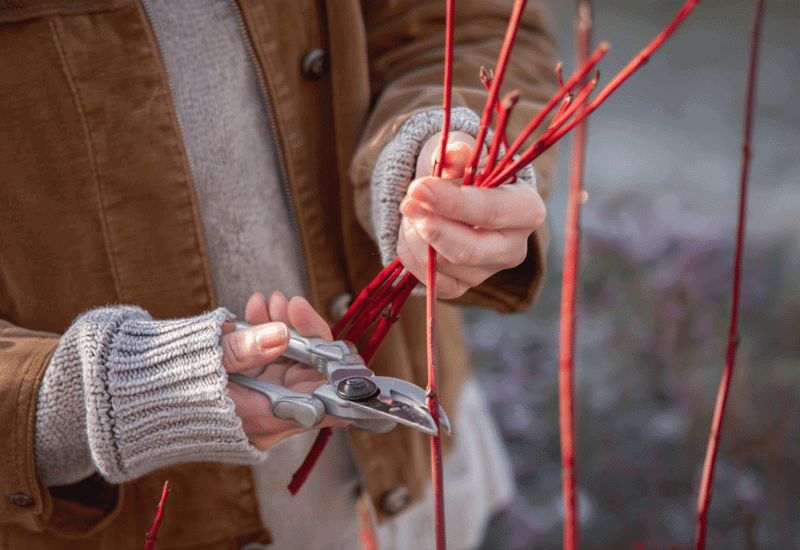
When most of the garden has gone quiet and the air smells like woodsmoke, that’s when I start one of my favorite fall rituals — taking hardwood cuttings. While everyone else is raking leaves and calling it the end of the season, I’m quietly snipping stems and setting next year’s garden in motion.
Hardwood cuttings are the slow magic of fall. They look like nothing — just bare sticks tucked into soil — but over the cold months, they quietly grow roots. By spring, what once looked lifeless bursts into green, strong and ready to plant. It’s the most satisfying kind of gardening: no rush, no fuss, just quiet transformation.
The process couldn’t be simpler. Choose sturdy, mature stems from plants that thrived this year — maybe the rose that wouldn’t stop blooming, the fig that finally fruited, or the hydrangea that never flinched at the heat. Cut pieces about pencil-thick from this year’s growth, firm but not brittle, and plant them before a hard frost arrives. They’ll root slowly through winter, ready to wake up when the soil warms again.
If you’ve never to propagate plants from semi ripe or hardwood cutting it before, fall is the perfect time to start. The parent plants are still alive but slowing down, and there’s plenty of woody material to choose from. The trick is to take your cuttings before hard frost sets in, while stems are firm but not brittle.
Here are 12 reliable plants that root beautifully from hardwood or semi ripe cutting cuttings — a mix of flowering shrubs, fruiting favorites, and ornamental vines that will quietly get to work over winter and be ready to plant by spring.
1: Forsythia (Forsythia × intermedia)
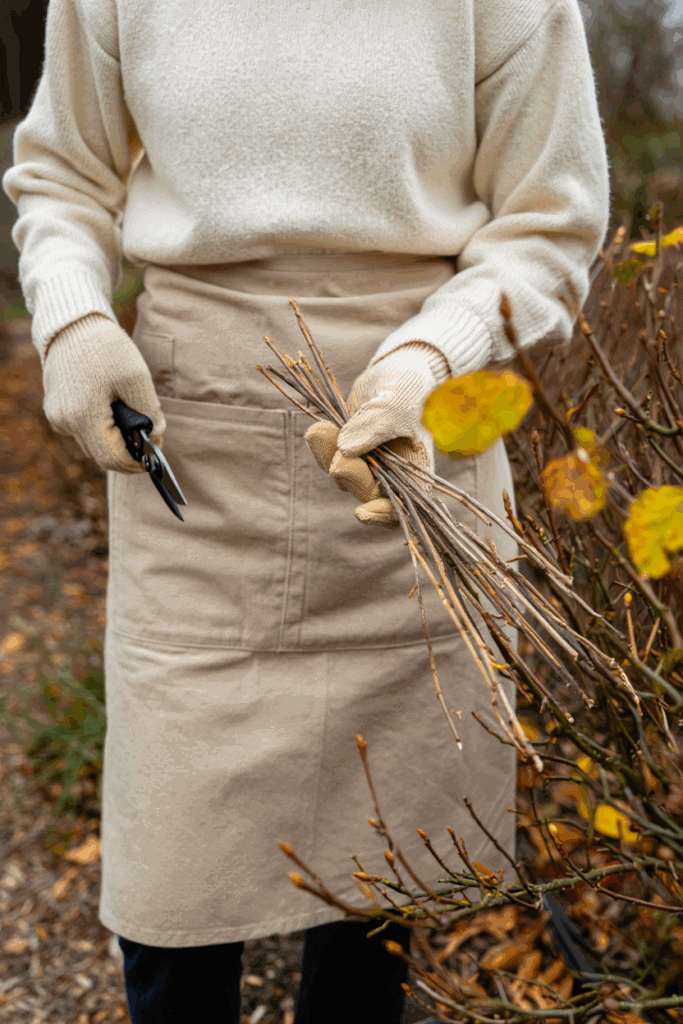
Forsythia is one of the most forgiving shrubs to root from hardwood cuttings, making it a great confidence builder if you’re new to propagation. Take cuttings in late fall through early winter (October–November), once the leaves have dropped and the year’s new shoots have turned firm and woody.
Choose one-year-old stems about pencil thickness, usually found arching out from the base of the shrub. Cut 8–10-inch sections, trimming the bottom just below a node (where roots form) and the top just above one. Remove any side shoots from the lower half.
Dip the base in rooting hormone and set the cuttings halfway deep in a free-draining mix—equal parts coarse sand and peat moss or perlite and compost. Water lightly and place them in a cold, protected spot outdoors such as a cold frame or along a north wall.
Over winter, they’ll callus and begin forming roots as the soil warms in early spring. Once you see new buds pushing, pot each one up or move to a nursery bed to grow on.
Pro tip: Forsythia roots so easily that even casual sticks stuck in the ground often take—but a little preparation now gives you stronger, bushier young plants by next fall.
2: Red-Twig Dogwood (Cornus sericea / Cornus alba)
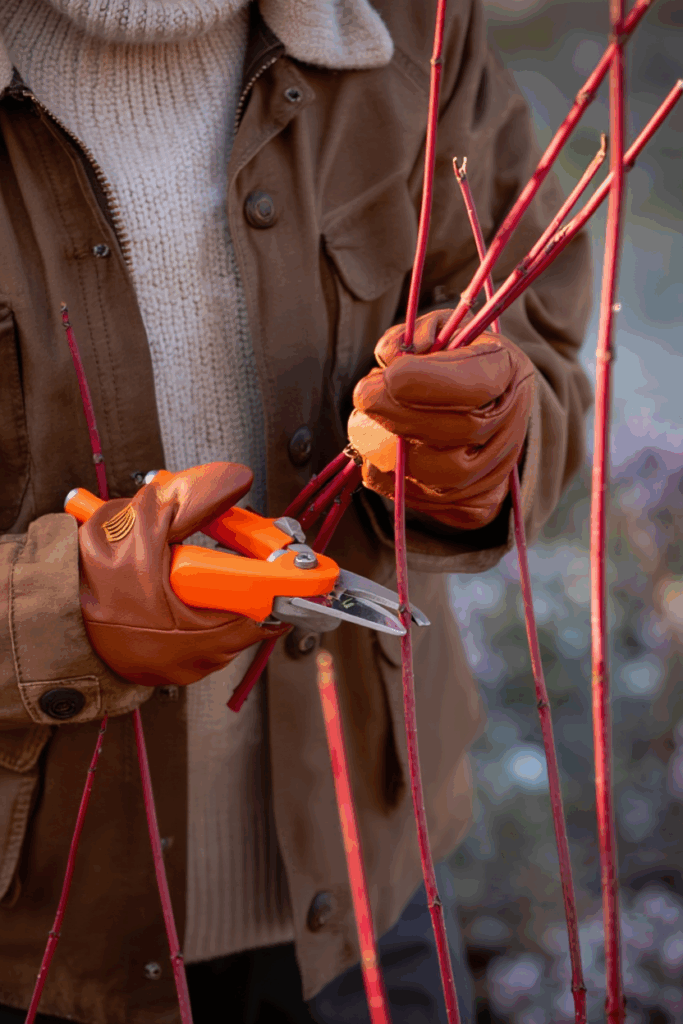
Red-twig dogwood practically begs to be shared. Every winter, those fiery stems light up the garden — and each one has the potential to become a new shrub. Propagating it from hardwood cuttings couldn’t be simpler, and it’s a great way to thicken a hedge or start a new row along a fence line.
Choose fresh, vigorous stems from the past season’s growth — they’ll be firm, smooth, and bright red. Cut 8–10-inch pieces about pencil thickness. Make your bottom cut just below a node, where roots naturally form, and the top cut just above one. Strip off any small side shoots from the lower half.
You can root dogwood in pots or straight in the ground. If you’re planting outdoors, pick a well-drained spot and push the cuttings in so that only one or two buds remain above the soil. Water once to settle them and then let nature take over.
During the cold months, the stems rest while roots slowly begin forming beneath the surface. As soon as the days start to lengthen, new buds will swell and leaves will appear. By the following growing season, you’ll have strong young shrubs ready to transplant.
Tip: Dogwoods root best from the reddest, youngest wood. Older, gray stems will still grow, but the color fades faster and the growth can be slower.
3: Star Jasmine (Trachelospermum jasminoides)
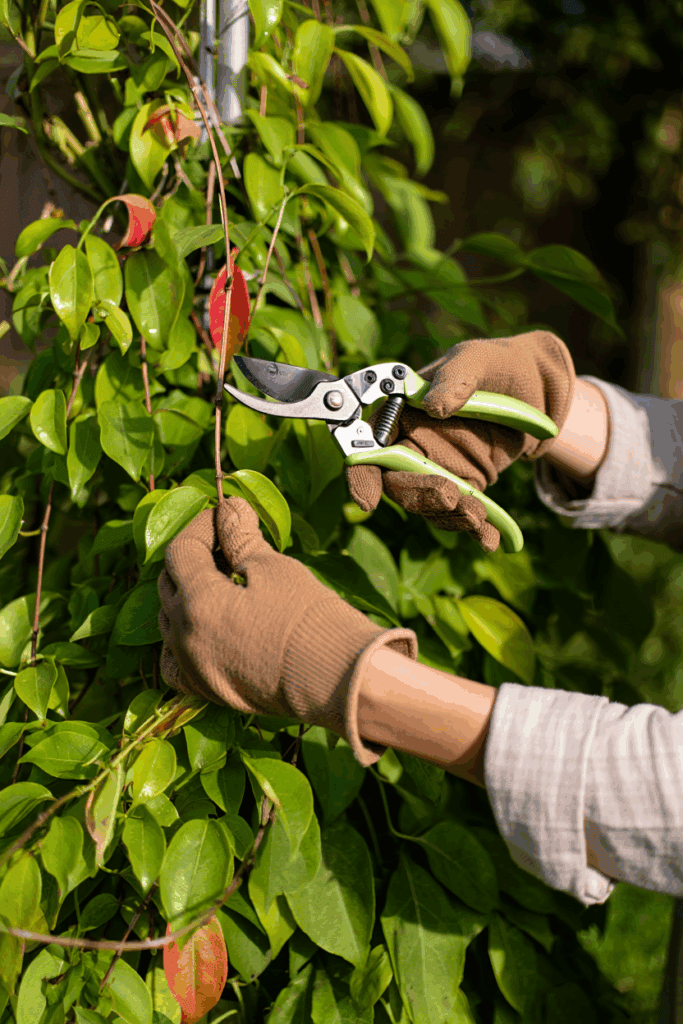
If you ever need an excuse to trim your star jasmine, here it is — those clippings make perfect new plants. The trick is choosing stems that have matured just enough: firm but still flexible, the kind that snap softly when bent.
Cut sections about 6–8 inches long, taking them from the outer growth of a healthy vine. Make your bottom cut just below a node, and remove the leaves from the lower half. Keep one or two pairs of leaves near the top; they’ll often turn rusty red while the cutting roots, which looks odd but is completely harmless.
Dip the base in rooting hormone, then set the cuttings halfway into a light, well-drained mix — something airy like perlite and compost or coarse sand and peat. Water lightly and place the pot somewhere bright but shaded from direct sun, with steady moisture and mild temperatures.
Within a few weeks, new roots will begin to form. You can check progress with a gentle tug — if there’s resistance, it’s working. Once the cuttings push out fresh green growth, move them into individual pots to grow on before planting.
Propagation tip: Star jasmine prefers consistency. Keep the mix evenly damp and the air calm, and it will reward you with vigorous, fragrant new vines by next season.
4: Flowering Quince (Chaenomeles japonica)
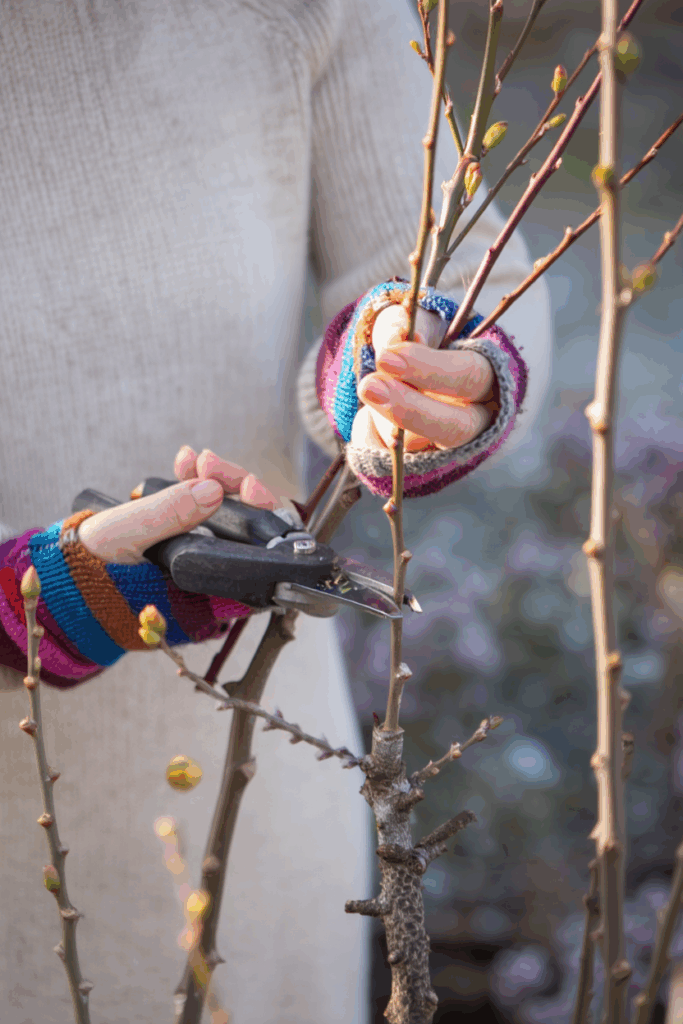
Flowering quince is one of those shrubs that bridges the seasons — tough, adaptable, and easy to multiply once you know which parts to use. For hardwood propagation, work with sturdy, one-year-old shoots that have finished growing and turned woody. Look for healthy stems near the base of the plant rather than at the tips; these base cuttings root far more reliably.
Cut sections about 6–8 inches long, making the bottom cut just below a node and the top cut just above one. Strip off any side buds or small twigs from the lower half. Dip the base in rooting hormone and push the cutting halfway into a free-draining medium — a mix of sand and compost or perlite and peat works well.
Keep the soil evenly moist, not waterlogged, and place the container in a protected, cool location where it can rest through winter without drying out. The cuttings will callus first, then send out roots as the weather warms and daylight increases.
Once you notice fresh buds breaking, move each rooted cutting into its own pot or a nursery bed to grow on for the season.
Propagation tip: Quince cuttings taken from the lower part of a stem root best; upper sections tend to dry out before they form roots.
5: Lilac (Syringa vulgaris)
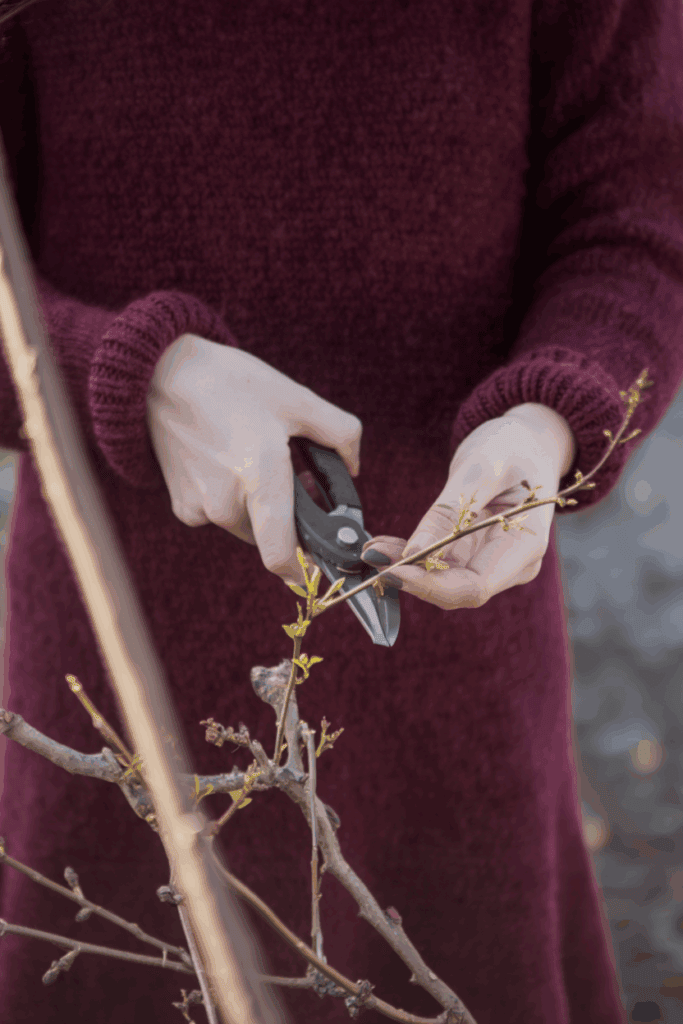
Lilacs can be a little stubborn about rooting, but once you understand what they like, success feels incredibly satisfying. The best time to take hardwood cuttings is late fall into early winter, after the leaves have dropped and the new wood has hardened.
Choose young, one-year-old shoots that grew this season — straight, smooth, and about pencil thickness. Instead of cutting them cleanly, pull a stem gently away from the branch so a small strip of older bark comes with it. That heel of wood gives the cutting a better chance to form roots.
Trim each one to around 8 inches long, with the heel at the base and a top cut just above a bud. Remove any side buds from the lower half, dip the end in rooting hormone, and plant it halfway into a well-draining mix of sand and compost or perlite and peat. Keep the medium just slightly damp.
Leave the pot in a cold, protected spot outdoors where it stays cool through winter. The cuttings will callus slowly, and by spring, some will begin to root and push new growth.
When that happens, pot them up or plant them in a nursery bed to grow on through summer.
6: Shrub Roses (Rosa spp.)
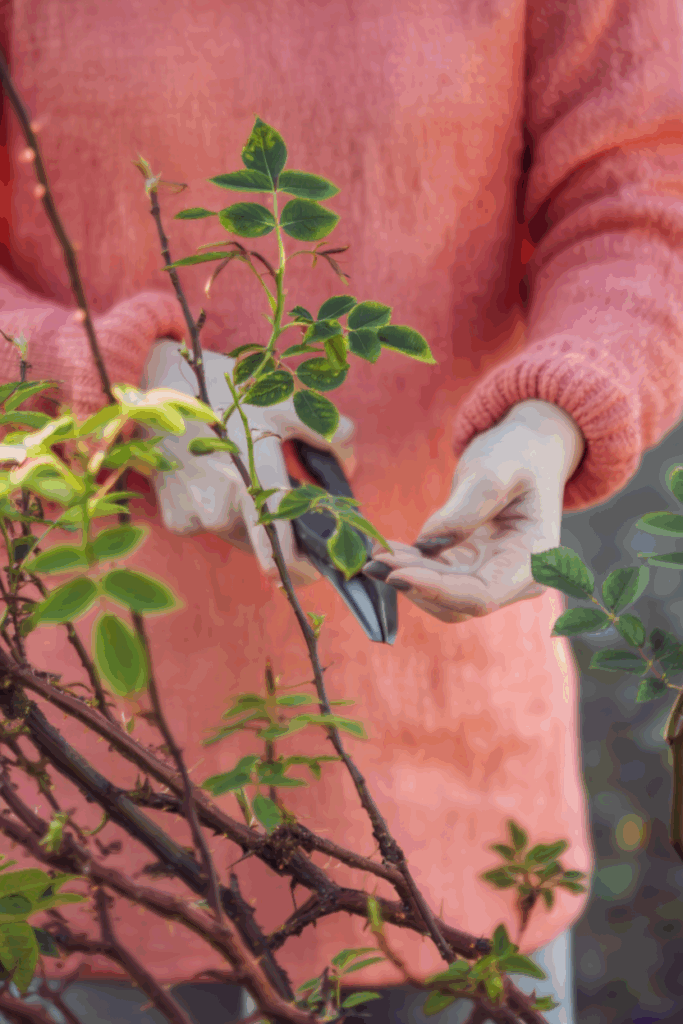
Hardwood cuttings are one of the most reliable ways to multiply shrub roses, especially the tough old-fashioned and landscape types. Take cuttings in late fall to early winter, once the leaves have dropped and the stems are firm and woody but before hard frost sets in.
Choose healthy, pencil-thick canes that grew this season and have finished flowering. Cut 8–10-inch pieces, making the bottom cut just below a node and the top cut about half an inch above one. Remove any leaves or buds from the lower half and scrape a small patch of bark near the base to expose fresh tissue — that’s where roots will form first.
Dip the base in rooting hormone, then plant the cuttings halfway deep in a moist, well-drained mix of sand and compost or perlite and peat. Keep the medium barely damp and place it in a cold, sheltered location such as a cold frame or unheated greenhouse.
During winter, the cuttings stay dormant while a callus forms at the base. By early spring, new buds begin to swell — a sign roots are developing. Move the rooted cuttings to pots or a nursery bed to grow on through the season.
Tip: Hardy shrub roses like rugosas, damasks, and heritage English varieties root far more easily than hybrid teas or modern floribundas.
7: Elderberry (Sambucus canadensis / S. nigra)
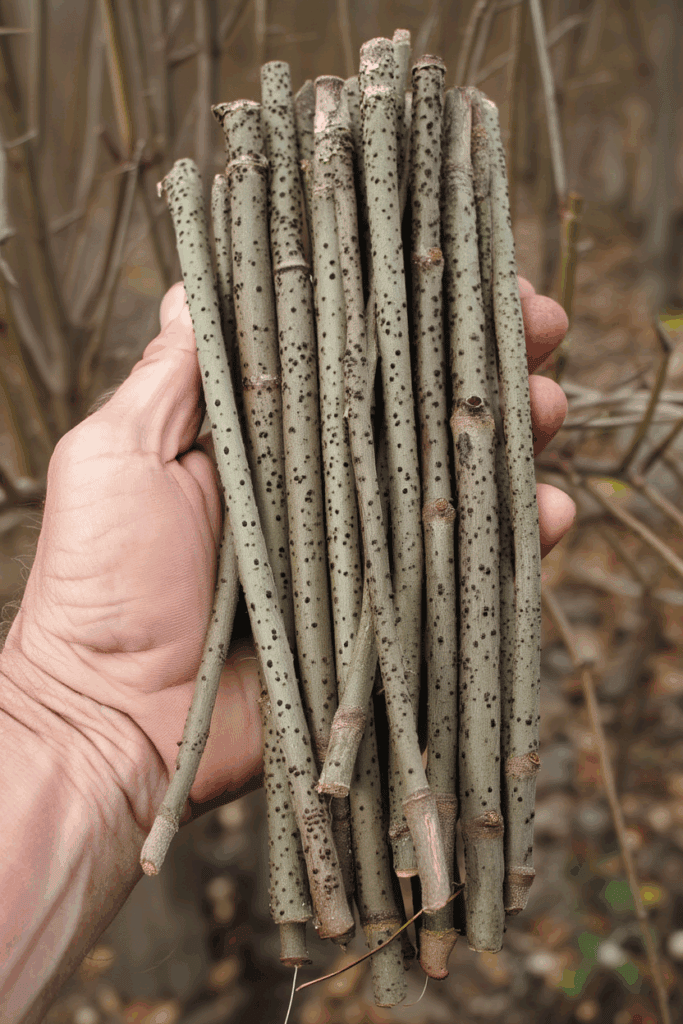
If you’ve ever cut back an elderberry, you already know how eager it is to grow again. That same energy makes it one of the easiest shrubs to propagate from hardwood cuttings. A few well-chosen canes can turn into an entire hedge by next year.
Look for young, one-year-old stems — smooth, sturdy, and about as thick as a pencil. Cut pieces 8–10 inches long, each with at least a few visible buds. Make your bottom cut right below a node and the top cut just above one. Strip off any side twigs from the lower half.
You can plant these cuttings directly into pots or straight into a garden bed if your soil drains well. Push them halfway into the soil, firm them in, and water gently so the mix stays moist but never soggy.
Leave them outdoors in a cool, sheltered spot where they’ll experience natural winter chill. The cuttings will rest quietly, then start to form roots as the days lengthen and soil warms.
By spring, new buds will break along the top — that’s your sign of success. Let them grow in place for a few months before transplanting to their permanent home.
Tip: Elderberry cuttings root so easily that you don’t need any special equipment or even rooting hormone — just good soil contact, steady moisture, and a little patience.
8: Honeysuckle (Lonicera spp.)
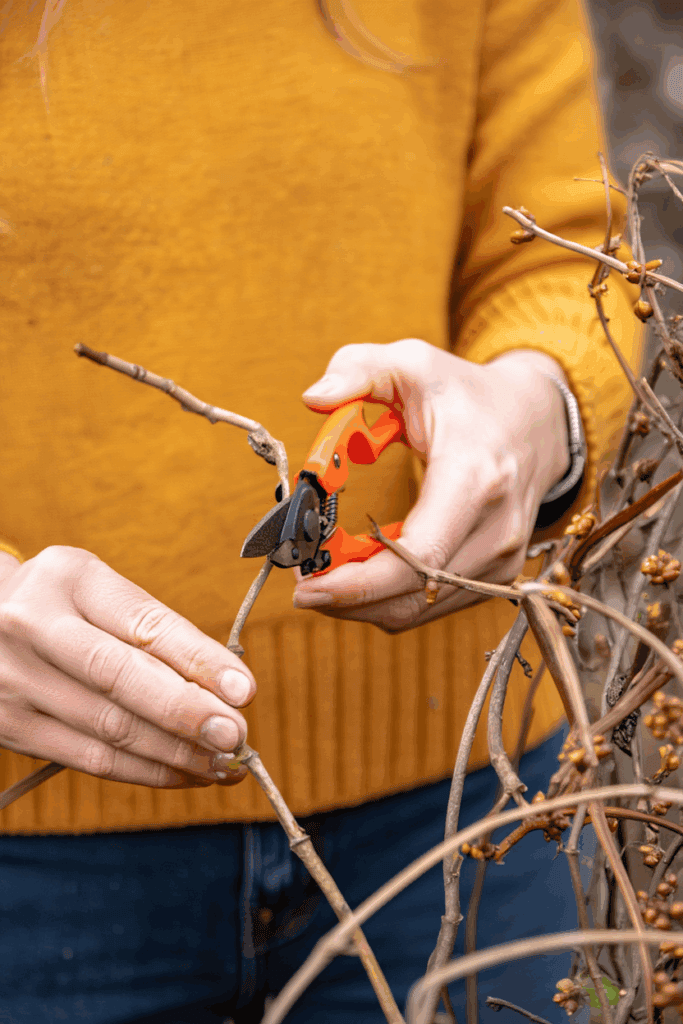
If there’s one plant that loves to make more of itself, it’s honeysuckle. Whether you grow it as a fragrant climber or a wildlife-friendly hedge, it’s incredibly easy to start new plants from hardwood cuttings once the stems have ripened.
Choose firm, woody shoots from the season’s growth — about pencil thickness, healthy, and free of flowers or seed pods. Cut pieces 6–8 inches long, making a clean slice just below a node at the base and another just above a bud at the top. Remove any buds or twigs from the lower half so the cutting can focus on rooting.
Plant the lower end halfway into a free-draining mix of sand and compost or perlite and potting soil. Water gently and place the pot in a cool, shaded corner outdoors. The cuttings won’t do much above ground during winter, but underground they’ll slowly form callus and start rooting as soon as the soil begins to warm.
By spring, you’ll see fresh green shoots pushing from the top buds — a sure sign of success. Move them into individual pots or straight into the garden to grow on.
Propagation tip: Honeysuckle is one of the easiest shrubs and vines to clone. Even a few leftover trimmings can root if the soil stays moist and the cuttings are protected from harsh sun and wind.
9: Fig (Ficus carica)
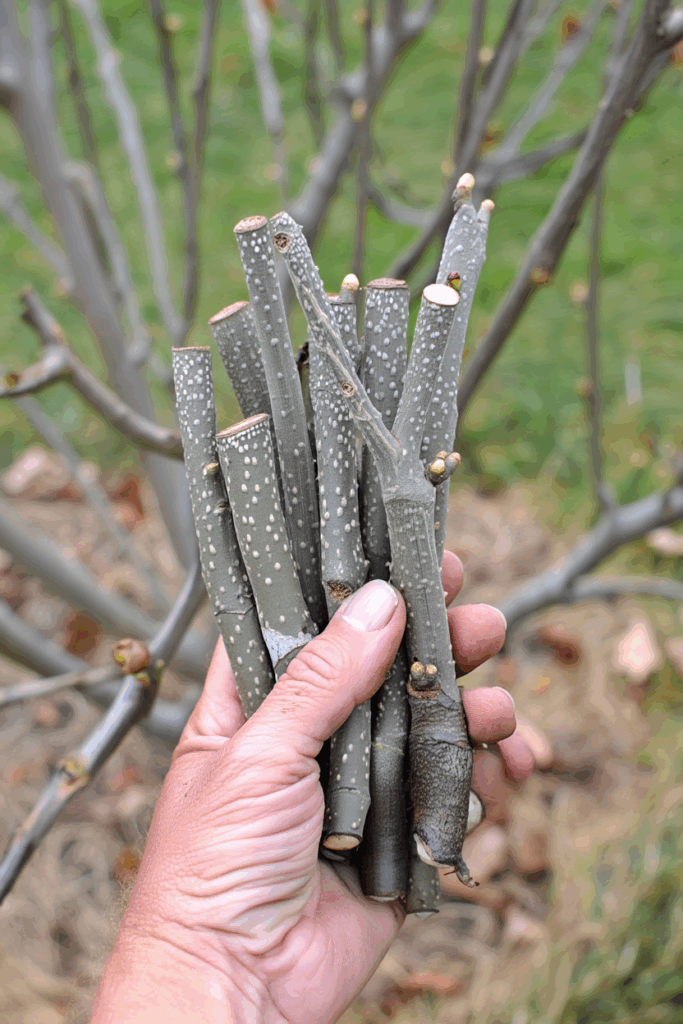
There’s something satisfying about turning a single fig branch into a new tree — it’s one of the simplest propagation projects you can do. Figs are naturally eager to root, which makes them perfect for gardeners who like a sure thing.
Choose sturdy, smooth shoots from the most recent growth — wood that’s firm but not too old. Cut pieces 8–10 inches long, each with several visible nodes. Make the lower cut just beneath a node, and the top cut about an inch above one. Remove any small side shoots or buds from the lower half.
Fill a pot or deep container with a loose, well-draining mix of sand and compost or perlite and potting soil. Insert the cutting so at least two nodes are below the surface, and water lightly. Keep the container somewhere bright and cool, protected from direct sun and heavy rain.
The stems will sit quietly for a few weeks, then begin forming roots as the temperature rises. You’ll know it’s working when new buds start to swell and small leaves unfold.
Once the roots are established, move each cutting into its own pot or plant it in the garden. By the end of the growing season, you’ll have a strong young fig ready to settle in permanently.
Tip: Figs root best from moderate-sized cuttings — avoid very thin or very thick wood. A piece the width of your pinky finger is about perfect.
10: Panicle Hydrangea (Hydrangea paniculata)
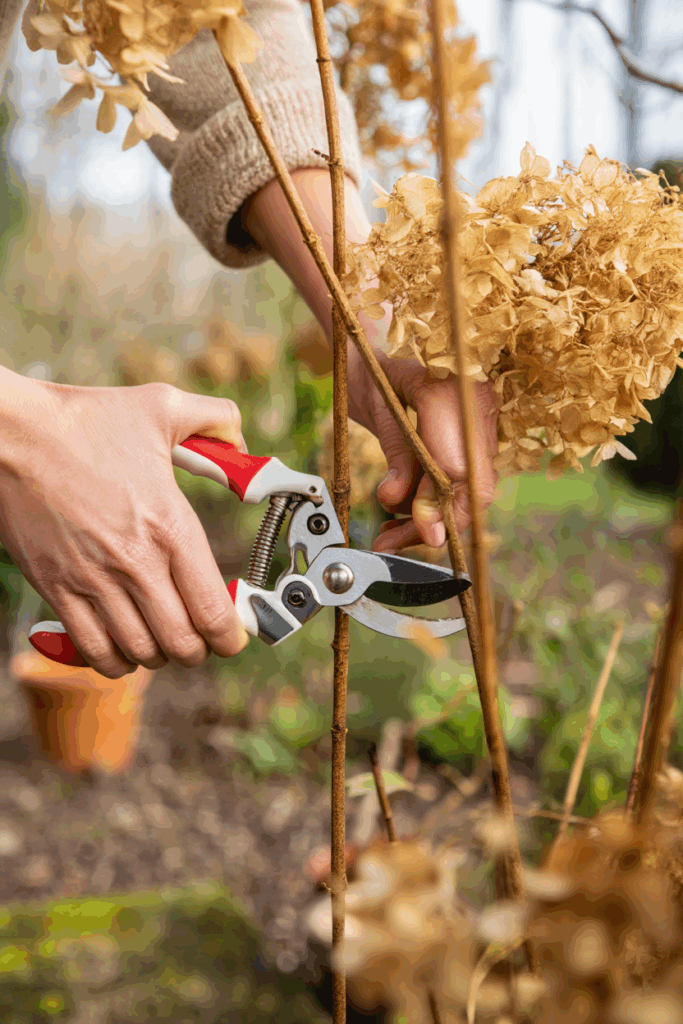
There’s something deeply satisfying about turning a few pruned stems into brand-new hydrangeas — especially when the plant practically helps you along. Panicle hydrangeas are some of the easiest to root, and hardwood cuttings taken once the shrub has gone dormant are almost foolproof.
Choose young, sturdy shoots that grew over the summer and have now turned woody. They should be smooth, firm, and about pencil-thick. Cut 6–8-inch sections, making your bottom cut just below a node and your top cut just above one. Remove any buds or small side branches from the lower half so the cutting can focus on forming roots.
Set the stems into a loose, well-draining mix of sand and compost or perlite and peat. Water gently so the soil feels evenly moist, then place the container in a cold, sheltered spot — somewhere it can stay cool and undisturbed through winter.
The cuttings will rest quietly, building callus tissue at the base long before you see anything happening above ground. When the weather starts to warm, the buds will swell and tiny new shoots will appear — your sign that roots have formed.
Tip: Take cuttings from newer wood, not old gray branches. Younger stems root faster and grow into stronger, better-shaped plants by the end of their first summer.
11: Japanese Spirea (Spiraea japonica)
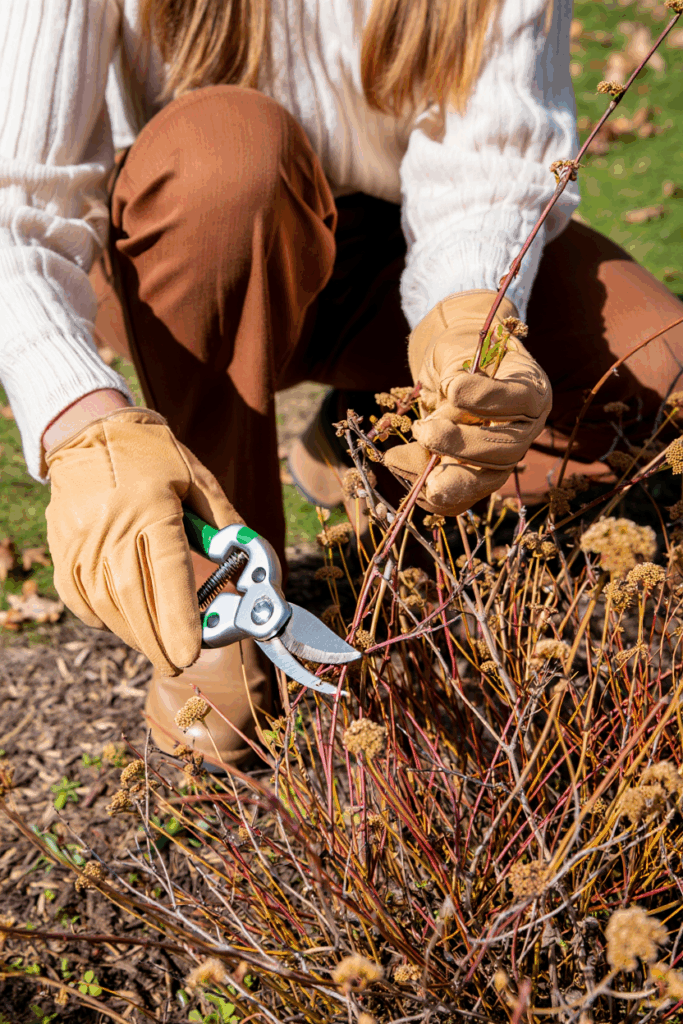
Japanese spirea has a way of making propagation feel easy — almost like it wants to help you out. It’s the kind of shrub that forgives timing slips, skipped steps, and the occasional rough cut, yet still rewards you with rooted stems come spring.
Look for last season’s shoots — the slim, firm ones that carried summer blooms. They shouldn’t be green and soft, but not thick or cracked either. Cut each one into 6–8-inch pieces, keeping two or three nodes on every cutting. Make your bottom cut right below a node and the top cut above one.
Stick the stems halfway into a loose, well-draining mix — sand and compost, or perlite and peat both work. Water just enough to keep the medium slightly damp, then leave them somewhere cool, bright, and sheltered. Don’t expect instant results; spirea does its rooting quietly, forming callus over winter and sprouting new growth when spring warmth returns.
When those buds start to swell, it means your cuttings have taken. Move them into their own pots or a nursery row to grow on.
12: Mock Orange (Philadelphus coronarius)
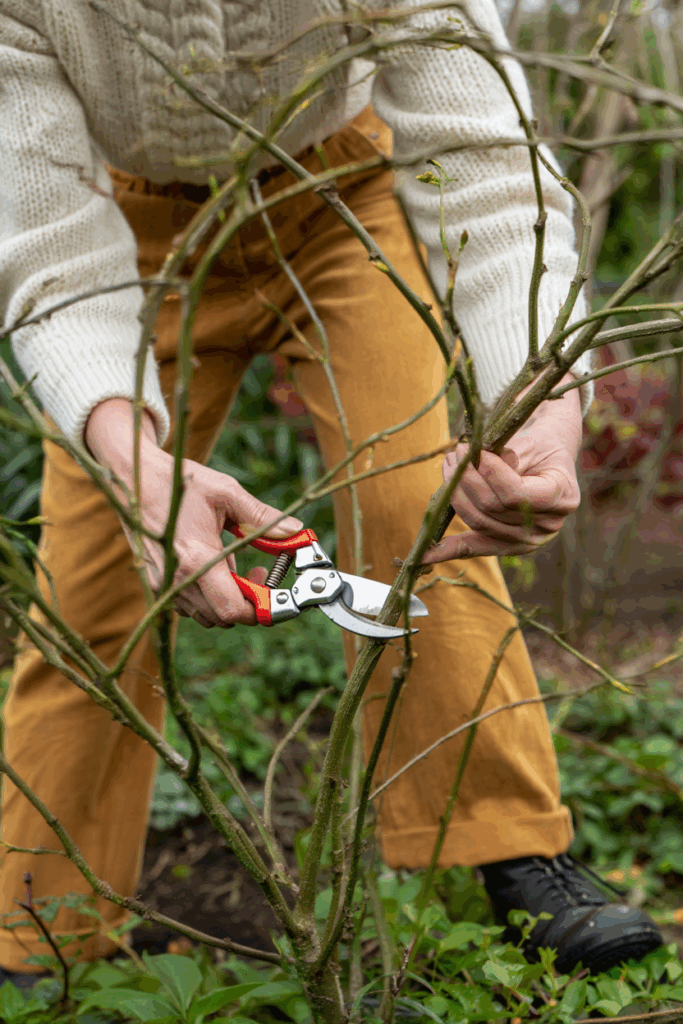
Mock orange is one of those shrubs that feels almost nostalgic — the scent of its white spring blossoms is enough to make anyone want more of it in the garden. Luckily, it’s also one of the easiest flowering shrubs to propagate from hardwood cuttings, so you can multiply that fragrance without much effort.
Look for strong, healthy stems that grew last season — firm, woody, and about pencil thickness. Cut 8–10-inch pieces, making your bottom cut just below a node and your top cut just above one. Remove any buds or side twigs from the lower half so the cutting can focus on root development.
Plant the cuttings halfway into a loose, well-drained medium — sand and compost, or perlite and peat moss work well. Water lightly and keep the soil just moist. Place the container in a cold, sheltered spot where the cuttings will stay cool through winter but won’t dry out.
Mock orange cuttings form callus at the base during the colder months and send out roots once the soil begins to warm. When new buds swell and small leaves appear, it’s your sign of success. Move each rooted cutting into its own pot or plant them out to a nursery bed to grow on.
Tip: For the best results, choose stems that grew the previous summer — they’re mature enough to root easily but young enough to establish quickly once planted.

Written By
Amber Noyes
Amber Noyes was born and raised in a suburban California town, San Mateo. She holds a master’s degree in horticulture from the University of California as well as a BS in Biology from the University of San Francisco. With experience working on an organic farm, water conservation research, farmers’ markets, and plant nursery, she understands what makes plants thrive and how we can better understand the connection between microclimate and plant health. When she’s not on the land, Amber loves informing people of new ideas/things related to gardening, especially organic gardening, houseplants, and growing plants in a small space.
